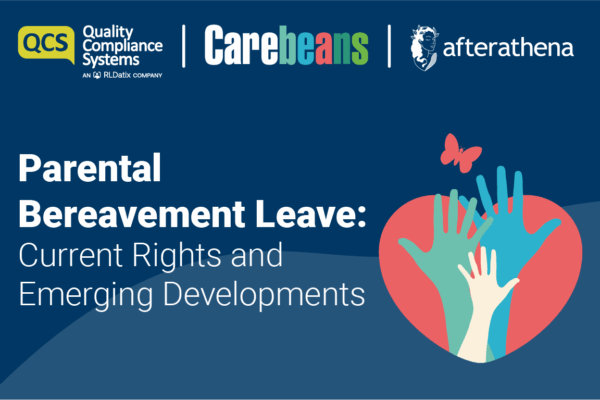 Last week we looked at a theory, based in the biological realm, that suggests at certain ‘stages’ within the more destructive dementias, the person would indeed receive none too little benefit from the presentation of such therapeutic use of ‘art’. This week we present a very different, more humanistic model which views the inner world of someone living with a dementia as functioning within a sphere of reliance upon emotions, and the need for external stimulus as a ‘ladder’ between their world and that of the observer or carer.
Last week we looked at a theory, based in the biological realm, that suggests at certain ‘stages’ within the more destructive dementias, the person would indeed receive none too little benefit from the presentation of such therapeutic use of ‘art’. This week we present a very different, more humanistic model which views the inner world of someone living with a dementia as functioning within a sphere of reliance upon emotions, and the need for external stimulus as a ‘ladder’ between their world and that of the observer or carer.
‘I’m still here’
There are both psychosocial and physiological advantages to engaging people with dementia in the arts. As explained by Anne Basting and John Killick (2003): “Creative expression is important for everyone, but it is even more important for those with dementia for whom other avenues of self-expression can be severely limited”. Basting (2004) states:
“Because there are no right or wrong answers in the creative process, creative activities allow people with dementia to enter from where they are – with memory gaps, word fragments etc. – without judgment”.
When people with dementia no longer perceive themselves as productive workers, active community members, or contributing family members, they are often left only with the role of a “sick person” (Basting & Killick, 2003).
The arts can provide people with dementia with the new social role of ‘artist’, as their other social roles are eroded by the disease. The ability to create something original, that is aesthetically satisfying, gives individuals with dementia a sense of control and mastery of their own life.
Is it not wonderful to think that by providing something as simple as the ‘safe space’ in which to express we may not only be preserving someone’s sense of self, but could be creating a whole new person; a person freed from convention, allowed to live within the dementia experience yet still feeling able to express. It is not important for us as paid carers to understand the expression, but it is important to value it. Remember Kitwood’s assertion about ‘personhood’ being able to be imparted or withheld? Art, the creative kind, is surely about simply expressing externally what is happening internally. The kind we call classical art, without snobbish pretence, allows us to feel deep emotional connection and impart personal meaning to a beautiful piece of music, or to experience sheer joy in seeing a Van Gogh starry, starry night?
Not convinced art can be beneficial at all so called stages of a dementing illness? In line with our biopsychosocial model, consider the following ‘physical’ benefits of indulging in expression through art. Creative work alerts parasympathetic arousal, stimulates the hypothalamus, and causes the brain to release endorphins and other neurotransmitters. These translate into slower heartbeat, lower blood pressure, slower breathing, balanced blood flow and hormone level, and improved functioning of the immune system, in addition to relieving pain and causing the body to go into deep relaxation.
Citing findings from neurophysiological research, Lane (2005) reports: “Art, meditation, and healing . . . are all associated with similar brainwave patterns and mind-body changes”.
Do you find these stress reductionist outcomes to be beneficial to someone living in a stressful situation, living with a dementia, in a care home? Do they seem to fit with the model we have been discussing for the past 6 months?
I want you, please, to go to this link https://www.youtube.com/watch?v=5FWn4JB2YLU and watch the story of Henry and the Alive Inside project. It is a freely available clip with no copyright to worry about. What should concern us is whether we are connecting with someone’s inner world, allowing them to express and communicate in a way that allows them to control the medium.
Art therapies and dementia care: a systematic review
Despite many years of professional interest in the use of arts therapies (ATs) with individuals who live with a dementia, few systematic reviews of the research literature have been conducted.
Renée L. Beard, from the US, produced one of the first and major reviews of the evidence base for studies that used art with people living with dementia, including music, visual arts, drama, and dance/movement therapies, between the years 1990 and 2010. She made a number of suggestions on how the use of art as a therapeutic medium in dementia caring can be strengthened.
The review addressed four questions: (1) What is the focus of the empirical base on using art with persons who have DAT? (2) [How] have these studies been designed and evaluated? (3) What findings are reported? (4) What does this tell us about the potential of AT for enriching the lives of people with dementia?
The analysis revealed that systematically designed, documented, and well evaluated AT studies were scarce. Information on research design, operational concepts, measurement tools, and methods of evaluation/analysis were vague, if provided. Disagreement exists about the utilisation of theoretical concepts and measurement/evaluation tools, and the evidence base is further divided between studies focusing on the ‘product’ versus the ‘process’ of art. Projects such as Alive Inside – which hopefully you have just watched – may fall into the former category, as the product is what has just happened to Henry, while the process of how and why remain vague and subjective – and in this case ‘accidental’.
Beard suggested that models investigating subjective well-being, or ‘enrichment,’ rather than objectively measured biomedical approaches privileging the management of deficits, would expand the evidence base and help ensure that those with a dementia receive the services they want, since strictly allopathic methodologies will continue to fall short of adequately evaluating what are deeply idiosyncratic psychosocial issues.
Art as a deeply personal ‘enrichment’
Our role as paid carers is to enrich the lives of those we care for. In my world that means getting rid of all the stress and distress, and replacing this with deeply enriching experiences that enhance or impart personhood, and which offer a pathway to a restorative sense of self.
We know that in many forms of dementia there is undoubtedly catastrophic damage to certain regions of brain tissue, proteins and inner structures that make daily functioning difficult, if not impossible. We do not, however, know what it is that makes a conscious human being ‘human’, and one of the definitions of the diagnosing of a dementia is that it does not causing clouding of consciousness.
So, however you view the individual you care for – and I hope that by reading my blogs this has become much more humanistic and hopeful – the person is fully conscious and has the preserved brain function from which to respond to stimuli even at the most advanced stage of an Alzheimer’s type dementia.
So, in closing this week’s blog, the message is that we must work in whatever medium that allows the person to experience well-being. I am convinced by the volume of research I have undertaken; by the examples of many, many Henry’s; and by the feelings I experience when listening to Beethoven’s 5th or Elvis Presley’s American Trilogy; or when I see The Wheatfield, or a work by Hopper; that whatever I am will continue on, despite damage to my brain structures. If you want to reach me, when I am living in your care home, play some rock ’n’ roll!
Till next time.
Paul Smith – Dementia Care Expert






